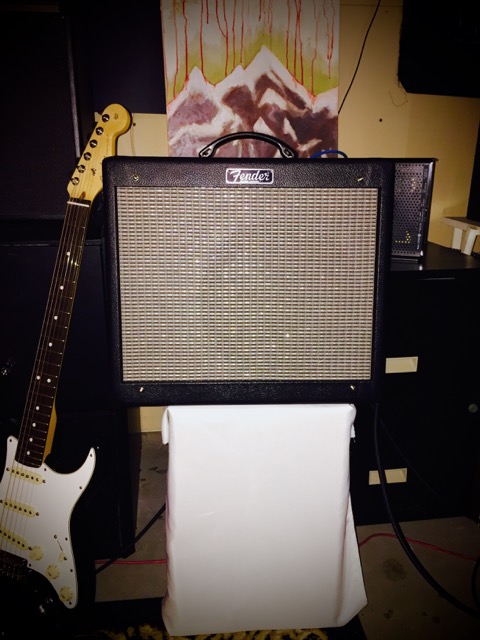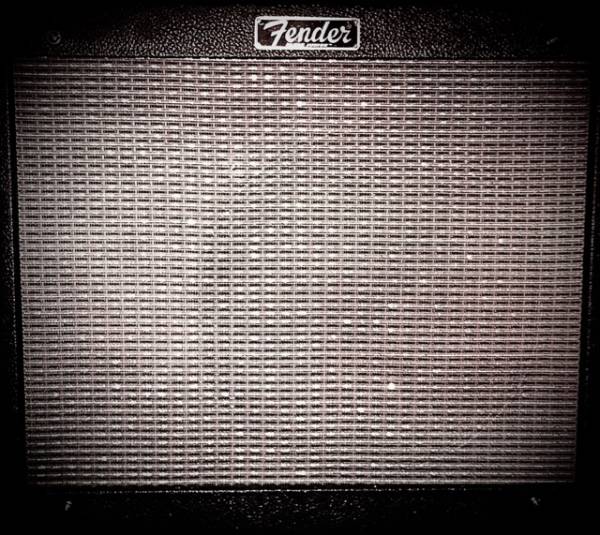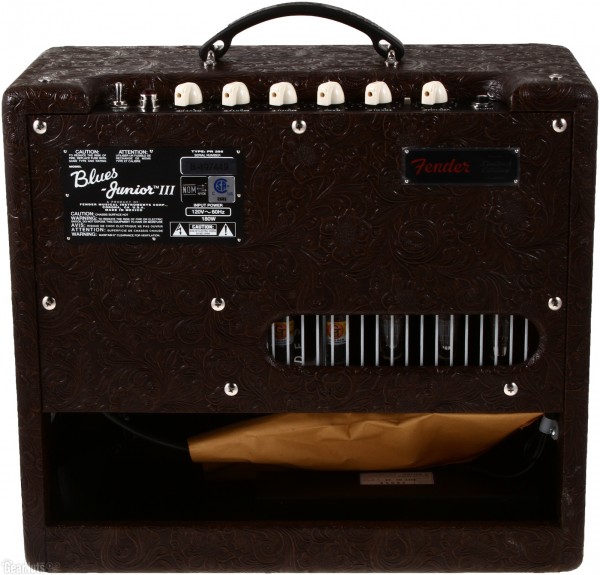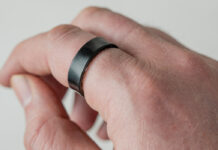 In my very first blog post for Best Buy I talked about amplifiers. I discussed important questions like tube versus solid state or hybrid models, combo amps versus head and cabinet setups, as well as exploring modern amp modelling and effects based units. The general gist of the blog was that it was primarily dependant on what and where you wanted to play. A bedroom amplifier is worlds different than a stage amp and jazz guitarists have different requirements than their Death Metal counterparts. Working within that framework then, if you play—or want to play—the Blues, then you need to seriously consider the Fender Blues Junior all tube amplifier. While this amp is versatile in that it can be used as an at home practise amp, a studio amp for recording, and also as an on-stage amp in certain venues/scenarios, it is an amplifier that by modern standards has limited functions. If you are looking for a new amp for your tribute to Sepultura band then keep looking because this amp will not meet your needs at all. If you want to be fully enveloped by that creamy tone and warm light gain as you close your eyes and channel your inner Albert Lee, this may be your amp.
In my very first blog post for Best Buy I talked about amplifiers. I discussed important questions like tube versus solid state or hybrid models, combo amps versus head and cabinet setups, as well as exploring modern amp modelling and effects based units. The general gist of the blog was that it was primarily dependant on what and where you wanted to play. A bedroom amplifier is worlds different than a stage amp and jazz guitarists have different requirements than their Death Metal counterparts. Working within that framework then, if you play—or want to play—the Blues, then you need to seriously consider the Fender Blues Junior all tube amplifier. While this amp is versatile in that it can be used as an at home practise amp, a studio amp for recording, and also as an on-stage amp in certain venues/scenarios, it is an amplifier that by modern standards has limited functions. If you are looking for a new amp for your tribute to Sepultura band then keep looking because this amp will not meet your needs at all. If you want to be fully enveloped by that creamy tone and warm light gain as you close your eyes and channel your inner Albert Lee, this may be your amp.
Modern amplifiers are technological marvels make no mistake about that. They are light, full of functions and effects, and able to emulate multiple models of amps and effects pedals with the push of a button. Over the past decade they have gotten even better as they are moving away from the sterility in tone that is associated with digital technology. It isn’t totally gone, however. Tube amps cost more than their solid state/digital/hybrid counterparts, for the most part, and require slightly more care and upkeep. The trade off for this is that you get something from a tube amp that you can’t get elsewhere, and that is generally described as warmth. You can play a tasty blues lick through a Fender Mustang for instance and it will sound good, great even, but when you play that same lick through the Blues junior, you will hear the difference. Perhaps even more poignantly, you will feel the difference as the tubes deliver a tone as well as an intangible that likely can’t be quantified with an aural measurement. It delivers soul. The only example I can think of to explain this comes from sci-fi movies presenting the idea of human like robots. These artificial people look like humans, sound like humans, and may even behave like humans but at the end of the day, they lack the one thing that makes humans truly human and that is a soul. Modern digital technology is close to replicating tube warmth but it is missing that innate quality that makes tube sounds warm and inviting and thus sets them apart.
AMP
 As I stated earlier, the Fender Blues Junior amplifier is a basic bare bones tube model, but that is everything that it needs to be. The controls are on the top of the unit and feature a ¼ input jack for your guitar, dials for volume, treble, bass, mids, master volume, and reverb. There is also a light that illuminates when the amp is turned on and an on/off toggle switch. There is also a small button between the volume and treble dials that is labelled FAT. When depressed, the FAT switch adds some extra meat to your tone, essentially thickening it up with some more middle range and a touch more gain. Fender does have a footswitch that allows you to turn the FAT on and off via the foot control but that accessory is not included with the amp and must be purchased separately. The volume dial works similar to a volume knob on your guitar and controls the gain whereas the Master volume is what really cranks up the amount of air pushed by the speaker. That’s it. You may notice that there is no standby mode, so when your amp is on, it is on. There is also no effects loop so if you want to use effects pedals with the Blues Junior, they will go direct into the input jack and thus be added to the signal before the tube pre-amp. Since it is likely that you would only want to use an overdrive pedal that is more than acceptable.
As I stated earlier, the Fender Blues Junior amplifier is a basic bare bones tube model, but that is everything that it needs to be. The controls are on the top of the unit and feature a ¼ input jack for your guitar, dials for volume, treble, bass, mids, master volume, and reverb. There is also a light that illuminates when the amp is turned on and an on/off toggle switch. There is also a small button between the volume and treble dials that is labelled FAT. When depressed, the FAT switch adds some extra meat to your tone, essentially thickening it up with some more middle range and a touch more gain. Fender does have a footswitch that allows you to turn the FAT on and off via the foot control but that accessory is not included with the amp and must be purchased separately. The volume dial works similar to a volume knob on your guitar and controls the gain whereas the Master volume is what really cranks up the amount of air pushed by the speaker. That’s it. You may notice that there is no standby mode, so when your amp is on, it is on. There is also no effects loop so if you want to use effects pedals with the Blues Junior, they will go direct into the input jack and thus be added to the signal before the tube pre-amp. Since it is likely that you would only want to use an overdrive pedal that is more than acceptable.
 The amp has one 12” speaker and boasts 15 watts of power, which doesn’t sound like much, but produces significant volume. This amp would be more than adequate for a home practise amp or a small venue like a coffee shop and frankly if you wanted to play a larger space would simply need to be mic’d and run through the P.A. There are no direct outs for recording either so for recording you would also mic the speaker and input that way into your DAW. It is almost identical in size and general appearance to the Fender Mustang I looked at previously but weighs over twice as much. Despite being approximately 35 pounds, it is still incredibly portable and well constructed so moving it is easy and it should clearly stand up to normal transportation demands. Simple and straightforward the Blues Junior has a sweet and warm out of the box sound that works perfectly for the blues, country, or even different styles of rock/classic rock music.
The amp has one 12” speaker and boasts 15 watts of power, which doesn’t sound like much, but produces significant volume. This amp would be more than adequate for a home practise amp or a small venue like a coffee shop and frankly if you wanted to play a larger space would simply need to be mic’d and run through the P.A. There are no direct outs for recording either so for recording you would also mic the speaker and input that way into your DAW. It is almost identical in size and general appearance to the Fender Mustang I looked at previously but weighs over twice as much. Despite being approximately 35 pounds, it is still incredibly portable and well constructed so moving it is easy and it should clearly stand up to normal transportation demands. Simple and straightforward the Blues Junior has a sweet and warm out of the box sound that works perfectly for the blues, country, or even different styles of rock/classic rock music.
SOUND
 I plugged in, turned on the amp, and when it was warmed up I turned up the volume and started to play. There were two things that immediately jumped out at me. This Fender (and most Fender amps of this ilk) has about the smoothest and silkiest clean tone I’ve heard for a long time. I regularly play a Marshall DLS 50 Watt tube head and cabinet and my clean sound, which frankly I rarely ever use, doesn’t sound anything near as inviting as this does. The amp’s gain will add some dirt to your sound but even with an external effect on board this will never produce tone reminiscent of Napalm Death or Agnostic Front, nor should it be expected to. I played a Strat, a telecaster copy, an Gibson SG, and an LTD EC-401 through this amp and while all sounded very good, the Strat seemed to demonstrate that Fender engineers have designed this with corporate synergy in mind as the Strat sounded best of the bunch. It was so full and warm and really just sounded at home.
I plugged in, turned on the amp, and when it was warmed up I turned up the volume and started to play. There were two things that immediately jumped out at me. This Fender (and most Fender amps of this ilk) has about the smoothest and silkiest clean tone I’ve heard for a long time. I regularly play a Marshall DLS 50 Watt tube head and cabinet and my clean sound, which frankly I rarely ever use, doesn’t sound anything near as inviting as this does. The amp’s gain will add some dirt to your sound but even with an external effect on board this will never produce tone reminiscent of Napalm Death or Agnostic Front, nor should it be expected to. I played a Strat, a telecaster copy, an Gibson SG, and an LTD EC-401 through this amp and while all sounded very good, the Strat seemed to demonstrate that Fender engineers have designed this with corporate synergy in mind as the Strat sounded best of the bunch. It was so full and warm and really just sounded at home.

When I put the volume up to see what it would sound like at different volumes, I did notice a discernable hum/buzz. At first I thought it may just be my cable so I did swap it out and try a few others and while some were better than others hum wise, it was still there. I found that pulling the guitars volume back a bit really helped to reduce this noise. Basically, the more you try to “push” this amp with natural tube overdrive/gain, the more you will get back as far as unwanted noise. The beauty of this amp though is that you really don’t need nor want to do that. You can get an incredibly warm and creamy sound without having to crank anything to the point of noise, and that is the beauty of this amplifier.
BOTTOM LINE
Blues, jazz, country, and classic rock are the wheelhouse for this portable and sweet sounding all tube amp from Fender. This is a perfect example of knowing exactly what you can do and not trying to do more than that. If you want to sound like Lamb of God then look at Mesa Boogie Rectifiers but if you are playing music that ranges in style from BB King to older AC/DC, you will find a friend here. Small and affordable for such a powerful tube amp, Fender knows this audience and has delivered the goods.




This was my first tube amp, purchased back in the late 90’s and still going hard. I’ll definitely echo the sentiment that they are great for guitarists on a budget, definitely my top pick in that price range.
My favourite thing about the Blues Jr. is that it is incredible for playing around with controlled feedback. I’ve used it both in the studio and for gigs at smaller venues and found it so easy to make really great spontaneous feedback & noise at a reasonable volume, without breaking any eardrums or losing control. If you’re into that ambient noise/feedback sort of thing, you’d be surprised what a tool the Blues Jr. can be. Biggest isn’t always the best!
Very good point about the “controlled” feedback, whichdoesn’t always work with you like you wish it would. Well stated sentiments that I agree with as well.
Comments are closed.